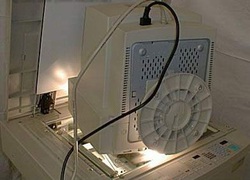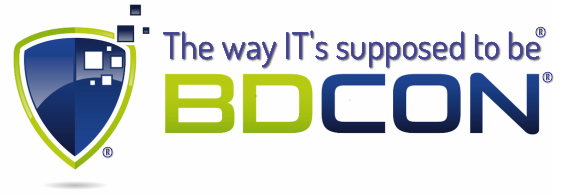
Let’s be honest. When it comes to installing a backup system, you probably just want to know that it works. I mean, you hardly ever need to use the thing anyway. How many times a year do you really need to restore your servers from a backup? Once? Twice in a bad year? In the event that you do have to restore the data, you’re going to be more concerned with why you have restore rather than what you’re restoring. Here’s the thing: You’re paying for a backup solution. Why wouldn’t you want your backup to pull its weight around the office? Keep reading and you’ll learn how more modern backup solutions are offering to do much more around the office than they do now.
Typically, companies backup their data by following the 3-2-1 rule. This means keeping 3 copies of your data on 2 different types of media and keeping one copy offsite. It used to be that someone would take the tapes home at the end of the day and this was considered ‘offsite’ storage. The only difference today is that the tapes have been replaced by an external hard drive. This worked fine until the person responsible either forgot, or had their car stolen, or towed or worse. In case you haven’t noticed, people are getting pretty sensitive about where their data is begin stored. Placing thousands of client files and documents in the hands of an employee is risky and downright unacceptable these days.
There’s another problem. The best case scenario in the event of a massive data loss is that your firm can go back 24 hours. You’ve still lost an entire day’s worth of production. That’s still thousands of dollars in lost revenue, not to mention the hassle of letting your clients know that the work you were doing for them is now going to be delayed further. And if it’s a malware problem that caused the data loss, there is no guarantee that your latest backup doesn’t have the offending program sitting on it. Restoring an older backup from the cloud can take many hours. Many firms have had to wait 12 hours or more just for the backup data to download, let alone be restored.
There is a better way to go about all this. Firms in the know are converting to an active backup solution that offers a much higher level of flexibility in backup schedule and recovery speed. Here’s how they work:
Software is installed on a server that automatically backs up all your data to both and external drive, and a cloud storage site. Once the initial backup is complete, the software backs up only the changes to the server at a regular interval, say, every 15 minutes. At the end of each day, those daily changes are then sent to the cloud so the last day’s work is always kept offsite. If you’re thinking “Wait, we have each day’s backup offsite already. Why do we need an active solution like this?”, keep reading.
The reason some of the more robust backup software programs are way better than past generations is the way they handle their incremental backups. By marking only the changes in the data they are able to pinpoint specific changes at the individual file level. You know that brief you spent 5 hours on before your word processor crashed and corrupted it? With an active backup solution, you can get it all back in no time. Did one of your in-house IT staff members accidentally delete a critical .dll file when they were upgrading your case management system? No worries. That can be easily restored with a few clicks.
Additionally, when combined with the right cloud storage provider, an active backup solution can get your firm back to business in minutes in the event of a major catastrophe. Modern solutions allow you to spin up a virtual image of the server hard drive from the cloud. This means that with just an internet connection, the entire staff can be up and running as if nothing is wrong while the server is being restored. All of this is done using secure encryption to ensure compliance with just about any standardization.
If your firm is using an older more traditional backup solution, it may time to consider changing things up a bit. Storage has never been cheaper so there is no better time than the present to put a solution in place that actually proves itself a little more useful than you’re used to.
Typically, companies backup their data by following the 3-2-1 rule. This means keeping 3 copies of your data on 2 different types of media and keeping one copy offsite. It used to be that someone would take the tapes home at the end of the day and this was considered ‘offsite’ storage. The only difference today is that the tapes have been replaced by an external hard drive. This worked fine until the person responsible either forgot, or had their car stolen, or towed or worse. In case you haven’t noticed, people are getting pretty sensitive about where their data is begin stored. Placing thousands of client files and documents in the hands of an employee is risky and downright unacceptable these days.
There’s another problem. The best case scenario in the event of a massive data loss is that your firm can go back 24 hours. You’ve still lost an entire day’s worth of production. That’s still thousands of dollars in lost revenue, not to mention the hassle of letting your clients know that the work you were doing for them is now going to be delayed further. And if it’s a malware problem that caused the data loss, there is no guarantee that your latest backup doesn’t have the offending program sitting on it. Restoring an older backup from the cloud can take many hours. Many firms have had to wait 12 hours or more just for the backup data to download, let alone be restored.
There is a better way to go about all this. Firms in the know are converting to an active backup solution that offers a much higher level of flexibility in backup schedule and recovery speed. Here’s how they work:
Software is installed on a server that automatically backs up all your data to both and external drive, and a cloud storage site. Once the initial backup is complete, the software backs up only the changes to the server at a regular interval, say, every 15 minutes. At the end of each day, those daily changes are then sent to the cloud so the last day’s work is always kept offsite. If you’re thinking “Wait, we have each day’s backup offsite already. Why do we need an active solution like this?”, keep reading.
The reason some of the more robust backup software programs are way better than past generations is the way they handle their incremental backups. By marking only the changes in the data they are able to pinpoint specific changes at the individual file level. You know that brief you spent 5 hours on before your word processor crashed and corrupted it? With an active backup solution, you can get it all back in no time. Did one of your in-house IT staff members accidentally delete a critical .dll file when they were upgrading your case management system? No worries. That can be easily restored with a few clicks.
Additionally, when combined with the right cloud storage provider, an active backup solution can get your firm back to business in minutes in the event of a major catastrophe. Modern solutions allow you to spin up a virtual image of the server hard drive from the cloud. This means that with just an internet connection, the entire staff can be up and running as if nothing is wrong while the server is being restored. All of this is done using secure encryption to ensure compliance with just about any standardization.
If your firm is using an older more traditional backup solution, it may time to consider changing things up a bit. Storage has never been cheaper so there is no better time than the present to put a solution in place that actually proves itself a little more useful than you’re used to.


 RSS Feed
RSS Feed